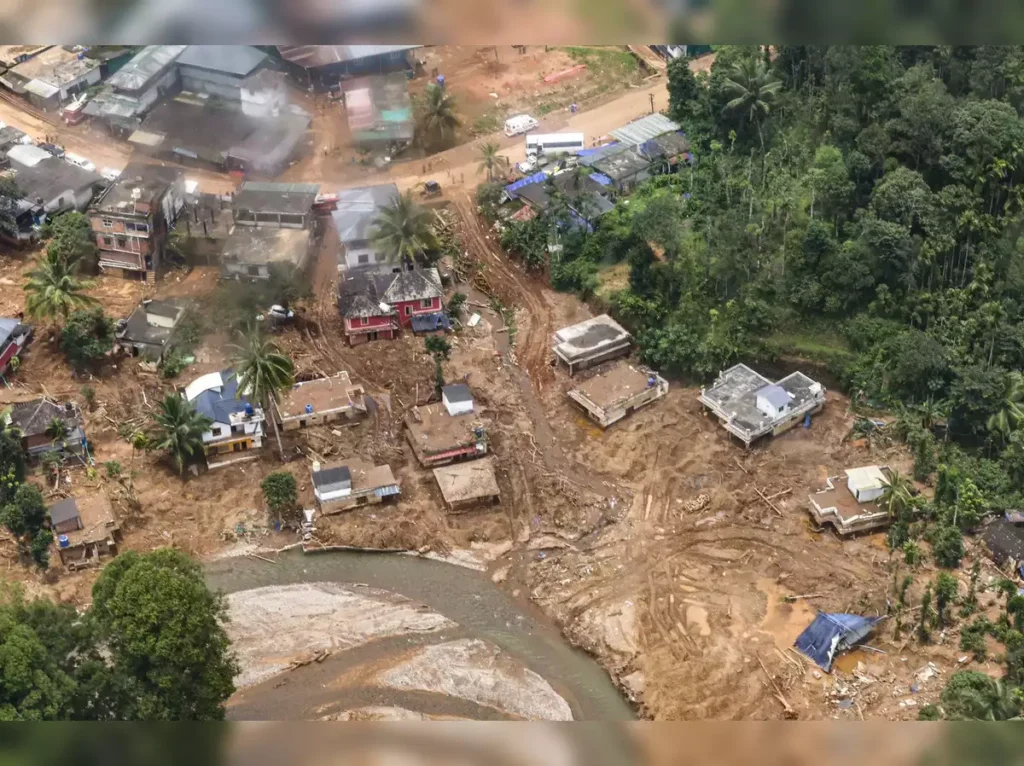

Understanding the Wayanad Landslides and Their Global Impact
In 2024, the Wayanad region of Kerala, India, experienced devastating landslides, which have triggered concerns over disruptions in the global water cycle. Landslides in the region resulted from a combination of deforestation, unregulated construction, and extreme monsoonal rainfall exacerbated by climate change. These landslides have disrupted local ecosystems and contributed to global water cycle imbalances by altering river systems and groundwater dynamics.
Impact on Local and Global Ecosystems
The Wayanad landslides caused extensive damage to the local environment. Large volumes of sediment displaced by the landslides obstructed river flow, creating new water pathways and altering hydrological systems. This localized disruption extended globally, as the sediment flow affected downstream regions and eventually led to sediment deposition in oceans, affecting marine ecosystems and weather patterns.
Role of Human Activities in Amplifying the Crisis
Human-induced factors, such as rampant deforestation and unsustainable agricultural practices, played a critical role in intensifying the Wayanad landslides. The region, known for its biodiversity and ecological importance, has faced relentless exploitation of its natural resources, leading to weakened soil structures and increased susceptibility to landslides.
Global Water Cycle and Climate Change Interconnection
The Wayanad landslides highlight the fragile interdependence between regional events and global systems like the water cycle. Alterations in river systems, groundwater recharge rates, and sediment transport from such events can influence global precipitation patterns, leading to extreme weather conditions elsewhere.
Calls for Immediate Action and Sustainable Practices
The incident underscores the urgent need for global cooperation and sustainable practices to mitigate climate change impacts. Effective land management, afforestation, and stringent regulations on development activities are crucial to protecting vulnerable ecosystems like Wayanad from further degradation.
Environmental Significance
The Wayanad landslides shed light on the vulnerability of ecosystems to human-induced climate change. For students preparing for government exams, understanding the interplay between local environmental degradation and global ecological impacts is critical.
Link to Exam Topics
This news intersects various subjects, including geography, environment, and disaster management, which are important for exams like UPSC, SSC, and other government tests. Candidates can expect questions on climate change, hydrology, or disaster response policies related to such events.
Policy Implications
This incident emphasizes the importance of integrating sustainable practices into policymaking. Exam aspirants can relate this to international agreements like the Paris Climate Accord and the significance of local environmental conservation efforts.
The Wayanad region has a history of environmental challenges linked to human activities. Over the years, unplanned urbanization, deforestation, and agricultural expansion have strained its ecosystems. The 2018 Kerala floods serve as a stark reminder of the region’s susceptibility to extreme weather events. These recurring natural disasters demonstrate the urgent need for sustainable development practices to preserve the ecological balance in Wayanad.
The Wayanad landslides were caused by a combination of extreme monsoonal rainfall, deforestation, unregulated construction, and other human-induced factors exacerbated by climate change.
The landslides disrupted local river systems, sediment transport, and groundwater recharge, contributing to changes in downstream ecosystems and global weather patterns.
Wayanad is rich in biodiversity and plays a critical role in maintaining ecological balance. It is highly vulnerable to human-induced environmental degradation and climate change.
Sustainable land management, afforestation, regulated development, and strict environmental laws are essential to protect fragile ecosystems like Wayanad.
This news is relevant for topics like geography, climate change, hydrology, disaster management, and environmental policies, which are part of many government exam syllabi.
Introduction to the Poshan Tracker Application The Poshan Tracker Application, developed under India’s Poshan Abhiyaan,…
Introduction to the Etalin Hydro Power Project The SJVN (Satluj Jal Vidyut Nigam) has released…
Odisha Launches “Labha”: A 100% State-Funded MSP Scheme for Tribal Empowerment In a significant move…
Exploring ISRO’s Poem-3 Platform: Fulfilling All Payload Goals The Indian Space Research Organisation (ISRO) has…
Bob Financial Solutions Limited Rebranded as Bobcard Limited with ‘Credit Reimagined’ Tagline” In the ever-evolving…
Exploring ISRO’s Poem-3 Platform: Fulfilling All Payload Goals The Indian Space Research Organisation (ISRO) has…